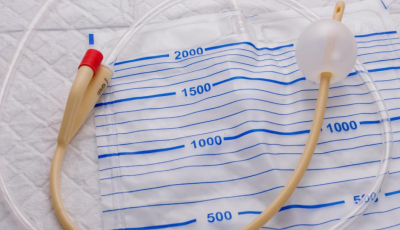Uterine fibroids also known as myomas, are non-cancerous growths that develop in or around the uterus. They are composed of muscle and fibrous tissues and can vary in size, ranging from very small to several inches in diameter. They can develop inside the uterine cavity, within the uterine wall, or on the outer surface of the uterus. Uterine fibroids are very common, that approximately 50% of middle aged women are estimated to suffer from this condition.



This is the most common symptom. Women may experience prolonged or heavy periods, with blood clots.
Fibroids cause severe menstrual cramps (dysmenorrhea) that may be more intense than usual.
Fibroids can cause a feeling of heaviness in the pelvic area. Some women may have pelvic pain or discomfort.
Large fibroids can lead to frequent urination or even a sense of urgency to urinate.
Fibroids may result in difficulty passing stool or a sensation of fullness and bloating.
Fibroids may bring about pain or discomfort during sexual intercourse.
In some cases, large fibroids can cause the abdomen to enlarge, giving the appearance of pregnancy.
Fibroids can potentially hinder fertility or cause problems during pregnancy, such as miscarriage or premature labor.
The treatment options are individualized depending on the circumstances and it is therefore important to consult our Consultant, so that you can determine the most suitable option based on your symptoms, overall health, and reproductive plans.
Painkillers: Painkillers like ibuprofen or acetaminophen can help relieve pain and discomfort.
Hormonal therapy: Birth control pills, hormonal IUDs (intrauterine devices), or hormone therapy can help to normalize heavy bleeding and reduce symptoms.
Gonadotropin-releasing hormone (GnRH) agonists: These drugs shrink fibroids by stopping the production of hormones that encourage their growth. They are usually used for a short period because of their side effects which include causing menopause-like symptoms.
Uterine Fibroid Embolization (UFE): It involves blocking the blood supply to fibroids, causing them to shrink.
MRI-guided focused ultrasound surgery (FUS): Fibroids are destroyed through high-energy ultrasound waves.
Myomectomy: Surgery to remove fibroids while leaving the uterus intact, which is an option for women who want to preserve their fertility.
Hysterectomy: Surgical removal of the uterus, which is a definitive treatment for fibroids. However, this eliminates the possibility of future pregnancy.
Endometrial Ablation: This procedure destroys the lining of the uterus and is used to control heavy bleeding in women with small fibroids within the uterus.
Myolysis: During this laparoscopic procedure, electric current or freezing is used to destroy the fibroids.
Uterine Fibroid Embolization (UFE) is a minimally invasive procedure used to shrink fibroids and alleviate symptoms while preserving the uterus. The procedure involves the following steps:




Fibroids are quite common with around 2 in 3 women developing one fibroid at some point in their life. They most often occur in women aged 30 to 50. Approximately 50% of middle aged women are estimated to suffer from this condition.
There are few known risk factors for uterine fibroids, some of which are as follows:
Obesity.Family history of fibroids.Getting your period at a young age (typically before the age of 10).Vitamin D deficiency.A diet higher in red meat and lower in green vegetables, fruit and dairy.Drinking alcohol.No history of pregnancy.Late age for menopause.It is extremely rare for uterine fibroids to become cancerous. Fibroids are malignant in less than 1 out of 1000 cases, and these malignancies are referred to as uterine sarcomas. This type of cancer starts in the muscular or connective tissues of the uterus, unlike the much more common endometrial cancer that starts in the lining of the uterus.
Many patients with fibroids have safe pregnancies. Nevertheless, the number, location and size of fibroids can influence pregnancy outcomes. Some patients suffering from uterine fibroids may give birth prematurely while others may need to undergo a caesarean section. Additionally, fibroids have been associated with miscarriages.
In certain instances, fibroids may shrink or reduce in size after pregnancy, especially after menopause or following hormonal changes that occur postpartum. However, the likelihood of fibroids completely disappearing without any intervention is generally low.
Yes, fibroids can contribute to a feeling of abdominal bloating or distension, which may make the stomach appear larger.
There are several potential consequences from untreated fibroids, depending on the size, number, and location of the fibroids, as well as individual factors such as age and overall health. Some common complications of untreated fibroids include heavy menstrual bleeding, pelvic pain or pressure, frequent urination, constipation, and back or leg pain, anemia, infertility or difficulties conceiving, pregnancy complications etc. Over time, these symptoms may worsen. Early intervention by our experienced medical practitioner can help alleviate symptoms, prevent complications, and improve quality of life.
In general, fibroids are not considered dangerous. But they can cause pain, and they may lead to complications. Fibroid symptoms such as heavy menstrual bleeding, may sometimes cause other complications such as anemia.
The following are some common descriptions of the types of pain women with uterine fibroids may experience:
Pelvic pain or pressure.Menstrual pain.Pain during or after sexual intercourse.Bladder or bowel pain.Acute pain from fibroid degeneration (necrosis).Back or leg pain.While uterine fibroids are most common during the reproductive years (between the ages of 30 and 50), they can indeed develop or persist even after menopause. However, their growth will usually be slower and they tend to become less symptomatic over time.
Usually, a combination of imaging techniques, physical examination, and medical history is used to identify fibroids.
Medical History : Our consultant will ask about your symptoms, menstrual history, and any other medical conditions. Heavy menstrual bleeding, pelvic pain or pressure, frequent urination, constipation, and infertility are the symptoms that are frequently linked to fibroids. Physical Examination : During a pelvic examination, the doctor may feel for abnormalities in the shape or size of your uterus, which could indicate the presence of fibroids. However, not all fibroids are detectable this way.Ultrasound : The most common imaging test for diagnosing fibroids is ultrasound. The size, quantity, and position of fibroids can all be determined via transvaginal ultrasonography, which also offers detailed pictures of the uterus.MRI (Magnetic Resonance Imaging): It can be used to provide more specific information, like the exact location of fibroids or evaluating their impact on nearby structures.Hysterosonography : In order to improve visibility of fibroids inside the uterus cavity (submucosal fibroids), saline is injected into the uterus during ultrasound imaging.Laparoscopy : During this test, our health care provider will make a small cut (incision) in your lower abdomen. A thin and flexible tube with a camera on the end will be inserted to look closely at your internal organs.Uterine Fibroid Embolization is very effective procedure with nearly 90% success rate. Most individuals who undergo UFE procedure experience remarkable reduction or complete resolution of their fibroid-related symptoms.
Yes, UFE is an effective treatment for multiple fibroids in the uterus. UFE can treat several fibroids simultaneously, regardless of their size or location within the uterus.
UFE is covered by insurance plan. However, the level of coverage may vary based on the specific plan. It would be better to ascertain from our coordinators and the insurance provider if it is covered and about any out-of-pocket fees.
Patients who have cervical/endometrial/uterine cancer or women with an active, recent or chronic pelvic infection cannot undergo UFE procedure.
No, UFE procedure will not adversely affect your fertility. UFE preserves and in some cases enhances fertility among women of normal childbearing age.
Prior to UFE, it is generally safe take routine medications. However, some medications like blood thinners are recommended to be discontinued for a few days prior to the procedure. Our Consultant will assess all your medications and give advice on whether you need to discontinue any medication prior to the procedure.
You will not feel any pain during the procedure. However, you may feel some cramping post procedure.
The recovery period for UFE is very brief. You might be able to go back to work within 3-7 days following the treatment.
You will be allowed to go home on the next day of the procedure, provided your condition is deemed appropriate for discharge by our healthcare team.
Studies show that it is very rare for a treated fibroid to regrow or for new fibroids to develop after UFE procedure. Despite the fact that the embolic agents' blockage is only temporary, fibroids typically die off before any blood flow is restored.
***We Promise, no spam!
WhatsApp us